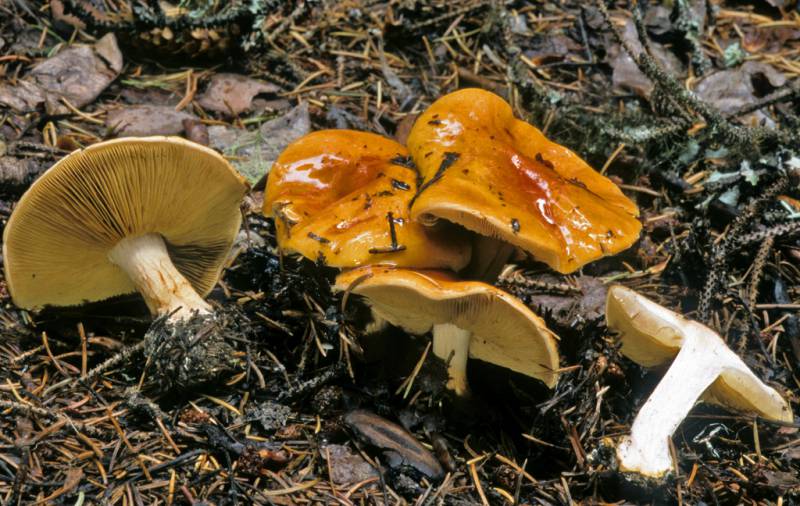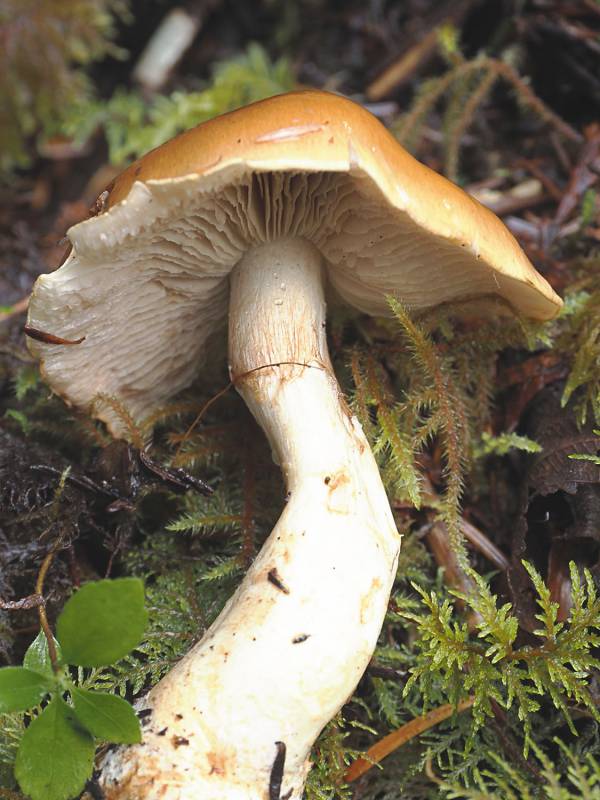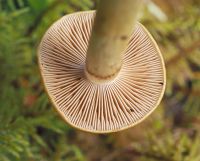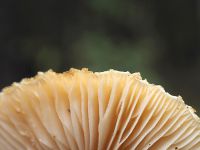Habitat: Acidic conifer forests
Conservation Status: Not of concern
Cortinarius multiformis and C. talus are closely related medium-sized species that, in Europe, are distinguished ecologically, the latter occurring in hardwood forests as well as arctic and alpine habitats with dwarf birch, and the former in acidic conifer forests. C. multiformis is the more common species, and is abundant in some years. It has dark ochraceous yellow to orange-brown or reddish brown caps, and its paler forms forms closely resemble C. talus. The latter typically has an ochraceous yellow to whitish yellow cap and pale stipe with a distinct basal bulb, and is not common, sometimes occurring in moist areas in subalpine forests. Both species have pale gills, bulbous white stipe base that sometimes has a slight rim, sparse white veil, white flesh, and a faint honey-like odor.
Sources: Trudell, Steve and Joe Ammirati. Mushrooms of the Pacific Northwest. Portland, Timber Press, Inc. 2009.
PNW Herbaria: Specimen records of Cortinarius multiformis in the Consortium of Pacific Northwest Herbaria database.
CalPhotos: Cortinarius multiformis photos.










